Photos courtesy of the artists
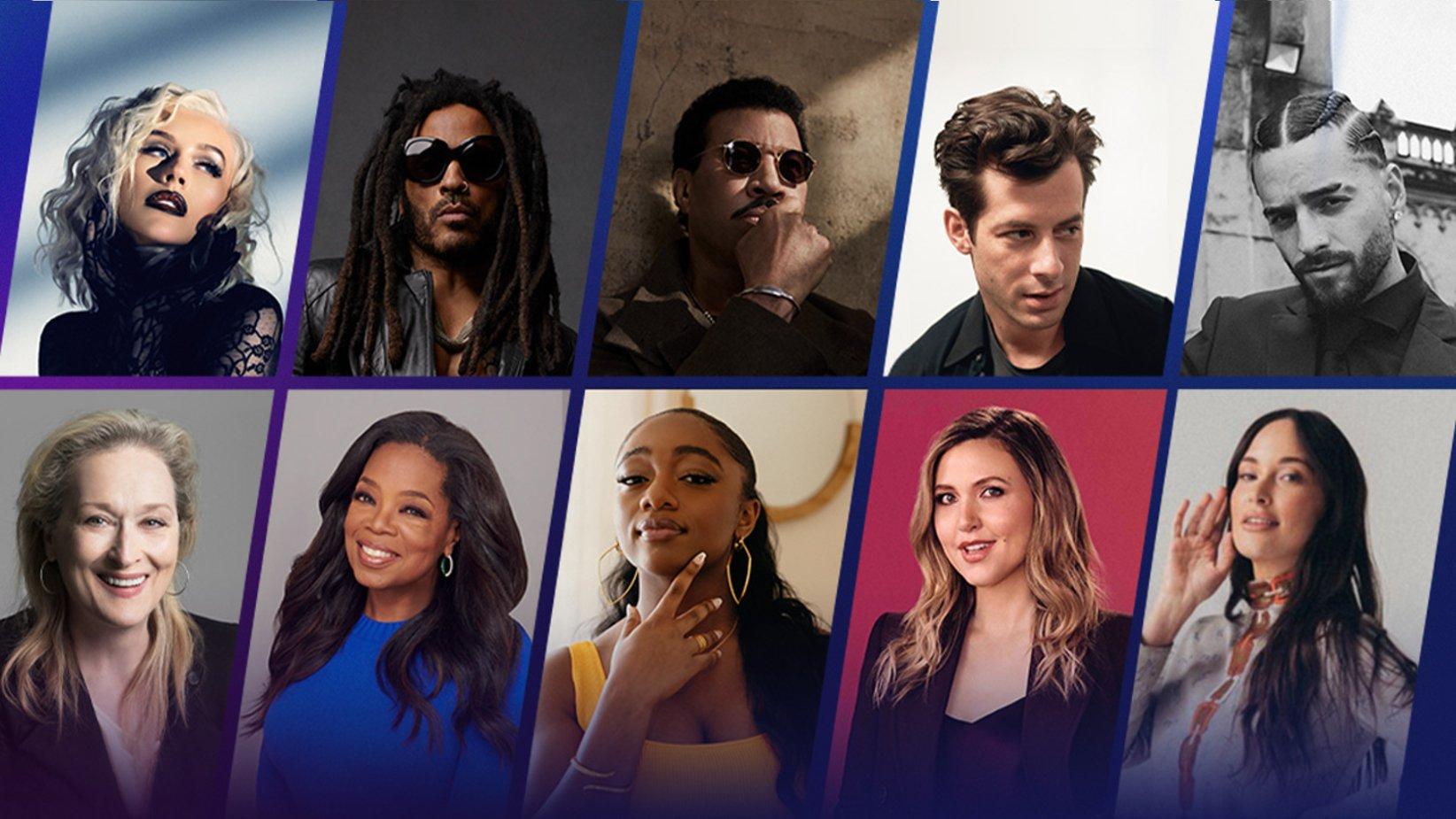
news
2024 GRAMMYs Presenters Announced: Christina Aguilera, Oprah Winfrey, Meryl Streep, Kacey Musgraves, Maluma, Taylor Tomlinson & More
Additional presenters for the 2024 GRAMMYs include Lenny Kravitz, Lionel Richie, Mark Ronson, and Samara Joy. The 2024 GRAMMYs will broadcast live from Crypto.com Arena in Los Angeles on Sunday, Feb. 4.
Updated Friday, Feb. 2, to add Kacey Musgraves as a presenter.
Presenters for the 2024 GRAMMYs have been announced: Christina Aguilera, Lenny Kravitz, Lionel Richie, Mark Ronson, Maluma, Kacey Musgraves, Meryl Streep, Samara Joy, Taylor Tomlinson, and Oprah Winfrey are all confirmed to take the GRAMMY stage on Music's Biggest Night this weekend, Sunday, Feb. 4. Of course, it wouldn't be a proper GRAMMY night without a few surprise guests, so make sure to tune in to find out who you'll see on GRAMMY Sunday.
In addition to the star-studded presenter lineup, the 2024 GRAMMYs will feature breathtaking performances from the leading artists in music today. Performers at the 2024 GRAMMYs include Billie Eilish, Billy Joel, Burna Boy, Dua Lipa, Joni Mitchell, Luke Combs, Olivia Rodrigo, SZA, Travis Scott, and U2. Several confirmed GRAMMY performers will make GRAMMY history at the 2024 GRAMMYs this weekend: Mitchell will make her GRAMMY performance debut, while U2 will deliver the first-ever broadcast performance from Sphere in Las Vegas. Additional performers will be announced in the coming days. See the full list of performers, presenters and host at the 2024 GRAMMYs to date.
Learn More: 2024 GRAMMY Nominations: See The Full Nominees List
2024 GRAMMYs: Explore More & Meet The Nominees
2024 GRAMMYs: See The Full Winners & Nominees List
How To Watch The 2024 GRAMMYs Live: GRAMMY Nominations, Performers, Air Date, Red Carpet, Streaming Channel & More
2024 GRAMMYs Performers: Burna Boy, Luke Combs And Travis Scott Announced
2024 GRAMMYs Performers: Billie Eilish, Dua Lipa, And Olivia Rodrigo Announced
Get The Full 2024 GRAMMYs Experience On Live.GRAMMY.com: Performances, Interviews, Red Carpet, Backstage & More
Here Are The Album Of The Year Nominees At The 2024 GRAMMYs
Here Are The Song Of The Year Nominees At The 2024 GRAMMYs
Get To Know The Best New Artist Nominees At The 2024 GRAMMYs
Here Are The Record Of The Year Nominees At The 2024 GRAMMYs
The 2024 GRAMMYs, officially known as the 66th GRAMMY Awards, will broadcast live from Crypto.com Arena in Los Angeles on Sunday, Feb. 4, at 8 p.m. ET/5 p.m. PT on the CBS Television Network and will be available to stream live and on demand on Paramount+.^ Prior to the Telecast, the 2024 GRAMMYs Premiere Ceremony will broadcast live from the Peacock Theater at 12:30 p.m. PT/3:30 p.m. ET and will be streamed live on live.GRAMMY.com. On GRAMMY Sunday, fans can access exclusive behind-the-scenes GRAMMY Awards content, including performances, acceptance speeches, interviews from the GRAMMY Live red-carpet special, and more via the Recording Academy's digital experience on live.GRAMMY.com.
Trevor Noah, the two-time GRAMMY-nominated comedian, actor, author, podcast host, and former "The Daily Show" host, returns to host the 2024 GRAMMYs for the fourth consecutive year; he is currently nominated at the 2024 GRAMMYs in the Best Comedy Album Category for his 2022 Netflix comedy special, I Wish You Would.
The 66th GRAMMY Awards are produced by Fulwell 73 Productions for the Recording Academy for the fourth consecutive year. Ben Winston, Raj Kapoor and Jesse Collins are executive producers.
^Paramount+ with SHOWTIME subscribers will have access to stream live via the live feed of their local CBS affiliate on the service, as well as on demand in the United States. Paramount+ Essential subscribers will not have the option to stream live but will have access to on-demand the day after the special airs in the U.S. only.
Stay tuned for more updates as we approach Music's Biggest Night!
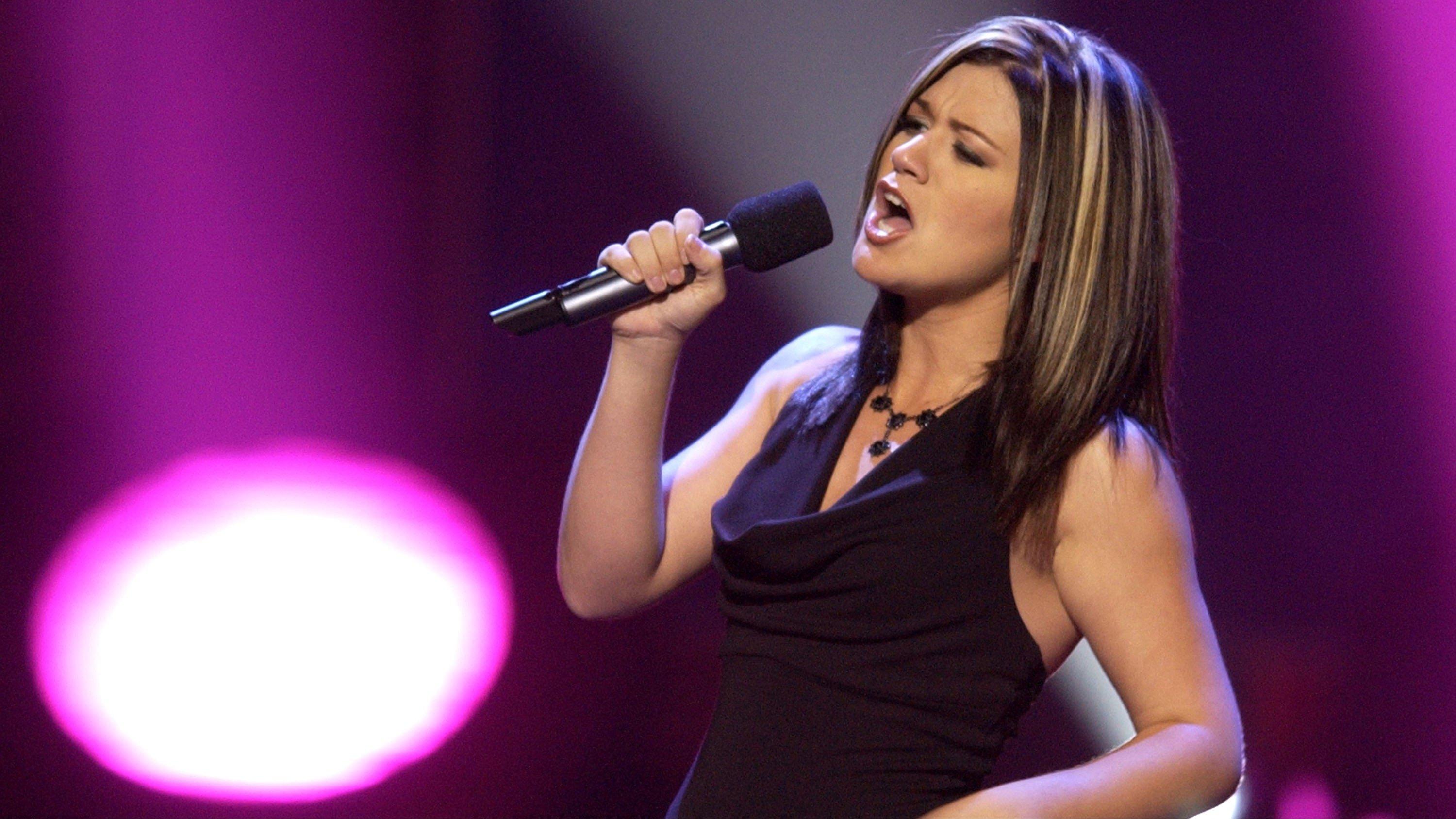
Photo: Steve Granitz / GettyImages
news
On This Day In Music: "American Idol" Premieres On Fox Network
For decades, "American Idol" has been instrumental in discovering some of music’s biggest names and pioneering the reality TV contest genre. As the show enters its 22nd run, here’s a look at how it has become an iconic household staple across the country.
For countless Americans, "American Idol" is intertwined with core memories as a show that had families eagerly glued to their TVs twice a week. It brought generations together, creating moments of both suspense and excitement that are still remembered today, as the show continues to run in its 22nd season.
Created by visionary entrepreneur Simon Fuller, "American Idol" premiered on June 11, 2002, as a fresh spin-off of the British program "Pop Idol." It revolutionized how Americans engaged with reality TV through its interactive, viewer-driven voting system, which encouraged audience participation in the success of their favorite contestants. The show also offered viewers a glimpse into contestants' candid backstories and personal journeys, anchoring emotional investment and skyrocketing the show's popularity.
The show's debut season featured a dynamic trio of judges: singer Paula Abdul, TV personality Simon Cowell, and producer Randy Jackson. Their contrasting personalities brewed a chemistry as captivating as the hopeful performances. Abdul’s warmth, Cowell's blunt wit, and Jackson’s humor added extra layers of entertainment, making the twice a week broadcasts a must-watch.
The first season of "American Idol" also unforgettably introduced the country to Kelly Clarkson. Since her debut — with a heart-tugging backstory about being the average girl-next-door with big dreams — Clarkson has gone on to tour the world, host her own TV talk show, and secured her spot as one of music’s most beloved talents.
"I had dreams since I was a little girl that I wanted to be on the GRAMMYs, or some award show and sing on there," Clarkson mentioned in her pre-audition interview. Flash forward 22 years, the pop singer has accumulated 17 GRAMMY nominations and three wins, propelled by a powerful vocal gift.
Other artists who launched their careers from the show's platform include Jordin Sparks, Carrie Underwood, Adam Lambert, and Jennifer Hudson, who each serve as testament to the show’s impact in music.
"American Idol" has not only opened our eyes to some of our favorite musicians, but it also has given us some of our favorite pop culture moments.
A video that frequently resurfaces on social media captures a memorable moment between Katy Perry and contestant Noah Davis, where they bond over the slang term 'wig'.
"No, it’s not your language. It’s just for us," Perry joked to her fellow judges, Lionel Richie and Luke Bryan, when they questioned the term’s meaning.
After two decades on air, "American Idol" has etched a lasting legacy in pop culture. It has paved the way for other reality TV music shows and created lasting memories for music fans along the way.
“The show transcends age, gender, ethnicity, everything,” Underwood told Billboard in 2005.
Explore More History-Making Moments In Music

On This Day In Music: Spice Girls Release "Wannabe," Their Iconic Debut Single

On This Day In Music: Michael Jackson Passes Away In Los Angeles At Age 50
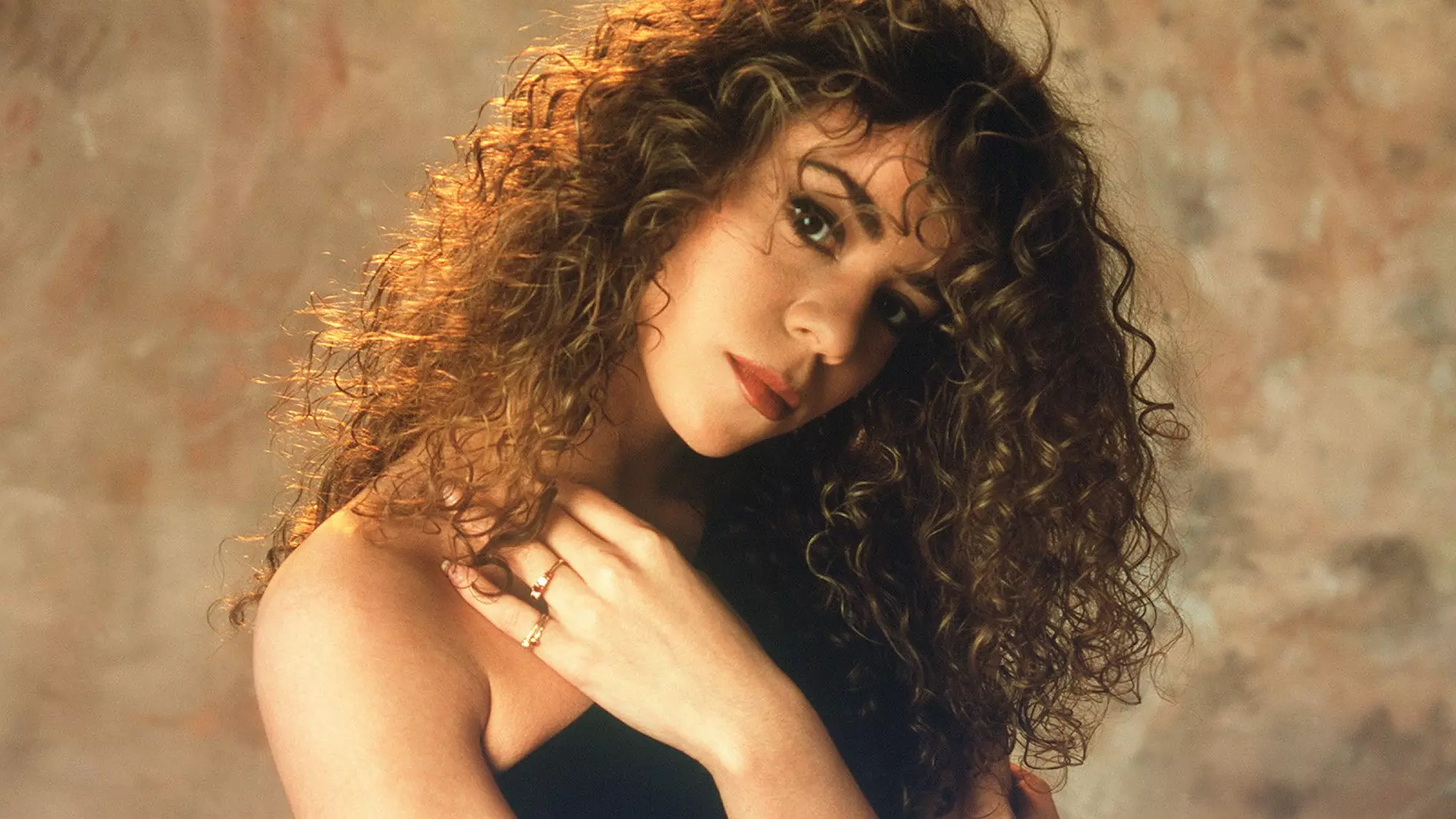
On This Day In Music: Mariah Carey Releases Her Self-Titled Debut Album
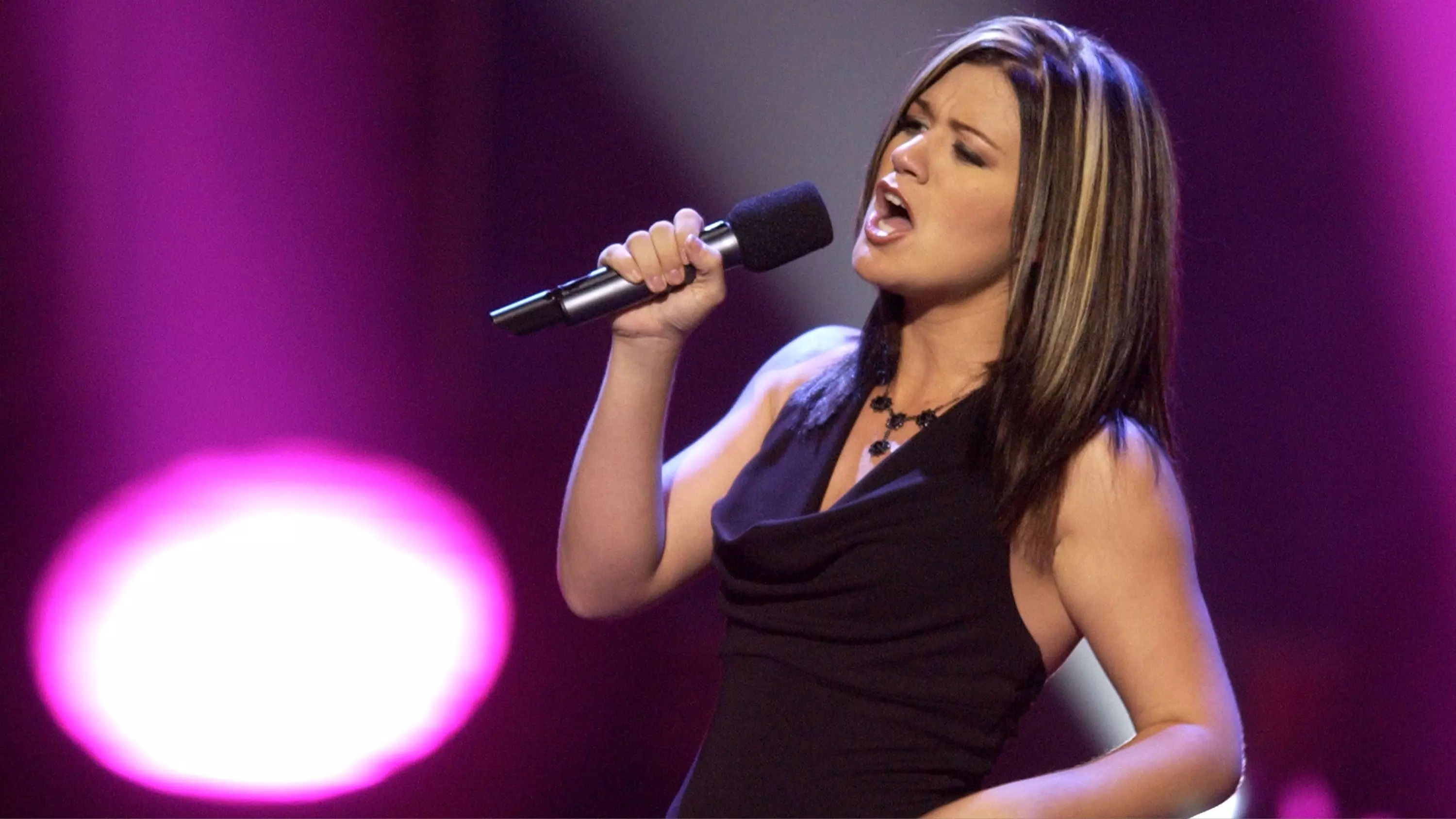
On This Day In Music: "American Idol" Premieres On Fox Network
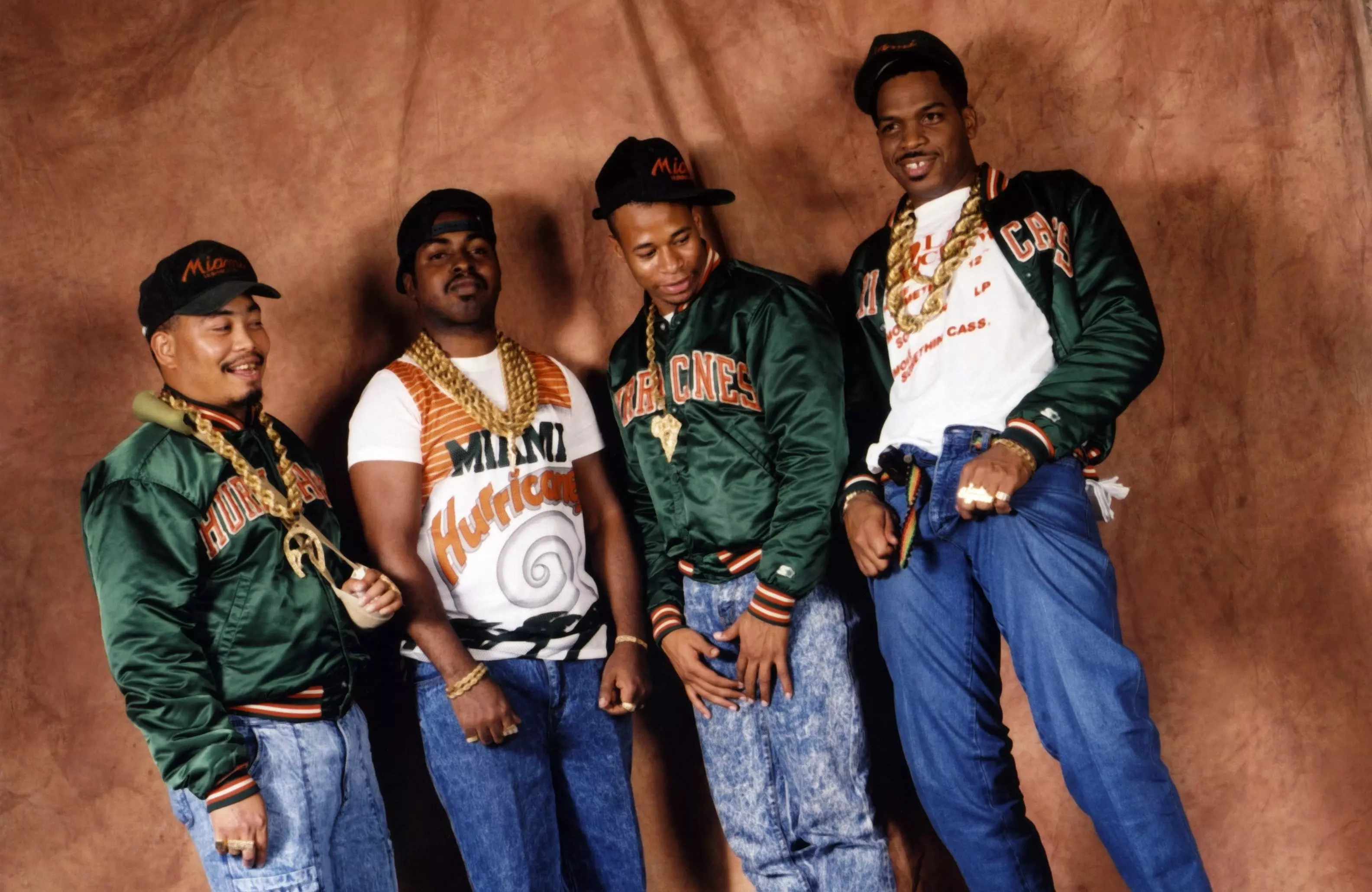
On This Day In Music: 2 Live Crew's 'As Nasty As They Wanna Be' Becomes First Album Declared Legally Obscene, Anticipates First Amendment Cases

Photo: Jamie McCarthy/Getty Images for TSX Entertainment
list
New Music Friday: Listen To Songs & Albums From Jungkook, Meghan Trainor, Peggy Gou, & More
Bask in the pre-summer magic with fresh musical offerings from acts as diverse as Ski Mask the Slump God, Kaytranada, Thomas Rhett, and more.
We're still a couple of weeks away from the summer solstice, but the smell of cookouts and chlorine is already in the air. As parts of the country experience summer weather, there's plenty of musical delights ready to soundtrack the start of summer.
From pop to alt-country to rap, this New Music Friday sprouted sounds for listeners of all persuasions. Here's a cross-section of today's songs and albums to check out, from Peggy Gou's debut album to the latest single from Jungkook.
Meghan Trainor — 'Timeless'
Just a few weeks before Meghan Trainor's breakthrough smash, "All About That Bass," turns 10, the GRAMMY winner rings in the anniversary in major fashion: a brand new album.
Trainor's sixth LP, Timeless, an irresistible split difference between bubblegum pop and woo-wop. Back in March, she released the lead single "Been Like This" with T-Pain; the "Buy U a Drank" star also appears on "Love on Hold."
"I cannot believe it has been 10 years since this all started. I have never been more grateful for this life that my incredible Megatronz have gifted me with," Trainor said in a statement — "Megatronz" referring to her rabid fanbase. "This new album and tour are all for them and my beautiful family."
Peggy Gou — 'I Hear You'
I Hear You might be South Korean DJ and singer Peggy Gou's debut album, but she declares it to be much more than that.
"It embodies countless hours of dedication in my journey to create something timeless, and is a testament to the power of listening, to ourselves and to each other," Gou said in a statement.
And of the video to "1+1=11," in all of its shadowplay: "By bringing together dance — embodied exploration of space — with colorful shadows, lights, and mirrors, I was able to bring some of the key interests that have long shaped my art into an entirely new context."
If all this resonates with you, I Hear You is — well, a must-hear.
Listen: Leap Into AAPI Month 2024 With A Playlist Featuring Laufey, Diljit Dosanjh, & Peggy Gou
Orville Peck, Diplo & Kylie Minogue — "Midnight Ride"
As Pride Month kicked off, Kylie Minogue brought out two very special guests at Outloud Fest at West Hollywood Pride: her newest collaborators, Orville Peck and Diplo. The trio debuted the slinky, sparkling "Midnight Ride," a winning trifecta of their diverse talent pools.
Just a few days later, the studio version has arrived. In its full-fledged wonder, the track is just as much of a ride on record as it was on stage.
The single is the latest offering from Peck's forthcoming duets album, Stampede; though the full album's release date has yet to be announced, the alt-country star teased the exciting collabs to come with the seven-song Stampede, Vol. 1 on May 10, which featured Elton John and Bernie Taupin, Nathaniel Rateliff and more.
Glass Animals — "A Tear in Space (Airlock)"
On July 19, English indie favorites Glass Animals will declare I Love You So F***ing Much with their fourth album. They previously released the advance single "Creatures in Heaven." "A Tear in Space (Airlock)" arrives from smack in the middle of the forthcoming album.
A celestial, pulsing track replete with delicious production details, "A Tear in Space (Airlock)" marks another evolutionary step for the Oxford-rooted group. Their smash "Heat Waves" might be in the rearview, but they still know how to craft a song for just that.
Jungkook — "Never Let Go"
Where would BTS be without its ARMY? It's an unthinkable prospect — and the boy band giants' beloved Jungkook has penned a worthy tribute to the fanbase that made them.
Released for BTS' annual debut anniversary celebration, Festa, "Never Let Go" opens its heart completely. "Without your love, I'm nothing/ You mean more than you know/ And words escape me whenever you're close," he croons. "I tried to put it into words but it don't measure up/ My pen and paper could never do quite enough."
Believe us: the radiant "Never Let Go" is more than enough. "It's the truth, it's the truth," Jungkook concludes. "We got something rеal nothing could break."
Learn more: Breaking Down Every Solo Act From BTS: Singles, Debut Albums & What's Next For The Septet
KAYTRANADA — 'TIMELESS'
The Haitian-Canadian producer, rapper, singer, and DJ born Louis Celestin has produced everyone from Anderson .Paak to Alicia Keys to Victoria Monét, but he's just as compelling when it's his name on the record sleeve.
The two-time GRAMMY winner proves just that with his third album, TIMELESS. Of course, the producer recruited several collaborators for the project, and the list is a panoply of associates from across his career — not only .Paak, but Childish Gambino, Don Toliver, and more.
Maluma & Blessd — '1 of 1'
"A full production between two Colombian artists had never been done before," rapper and singer Maluma brassily proclaimed in a recent press statement. "If it's the first, it can't be done twice."
He's referring to the (aptly titled) 1 of 1, his new EP with fellow Colombian great Blessd. Co-produced by MadMuscik and the RudeBoyz, this six-pack is a reflection of the clear admiration and respect between the two reggaetón practitioners.
This pre-summer weekend, grab a bestie, hit the road, crank up tunes like "Call Me" and "Goyard/GTA," and let that feeling flow through you, too.
Ski Mask the Slump God — '11th Dimension'
Five years after his last LP, Floridan rap phenom Ski Mask the Slump God returns by taking listeners to the 11th Dimension.
If 11th Dimension's advance singles — the jovial "Ooga Booga!", the propulsive "Headrush" — whetted your thirst, get ready for the other 19 tracks, like head-spinning highlights "By Myself," "KillStreak" and "Him Jung Un."
And while Ski Mask the Slump God takes most of those tracks himself, the album's five features are equally as thrilling: Future and ATL Jacob, Skillibeng, Corbin, and two posthumous duets with late rap stars XXXTentacion and Juice Wrld.
Generally, when an artist has a blast making music, it seeps through the grooves — and Thomas Rhett had an absolute ball making his new album, About A Woman, out Aug. 23.
"I did this with a new batch of producers, a lot of different songwriters. This is the funnest album that I've made, I think," he told Backstage Country. "This is a very, very 'me' album. If you liked Tangled Up and Life Changes, Center Point Road, this album is sort of that on steroids."
He's already revealed the first single, "Beautiful as You"; its follow-up, "Gone Country," is a rough-hewn statement of down-home purpose. Every line and lick is true to his dictum that he "got back to the root of why I love to make music and put smiles on faces."
Let that smile cross your face as you prepare for your summer adventures — and we'll see you on next week's New Music Friday!
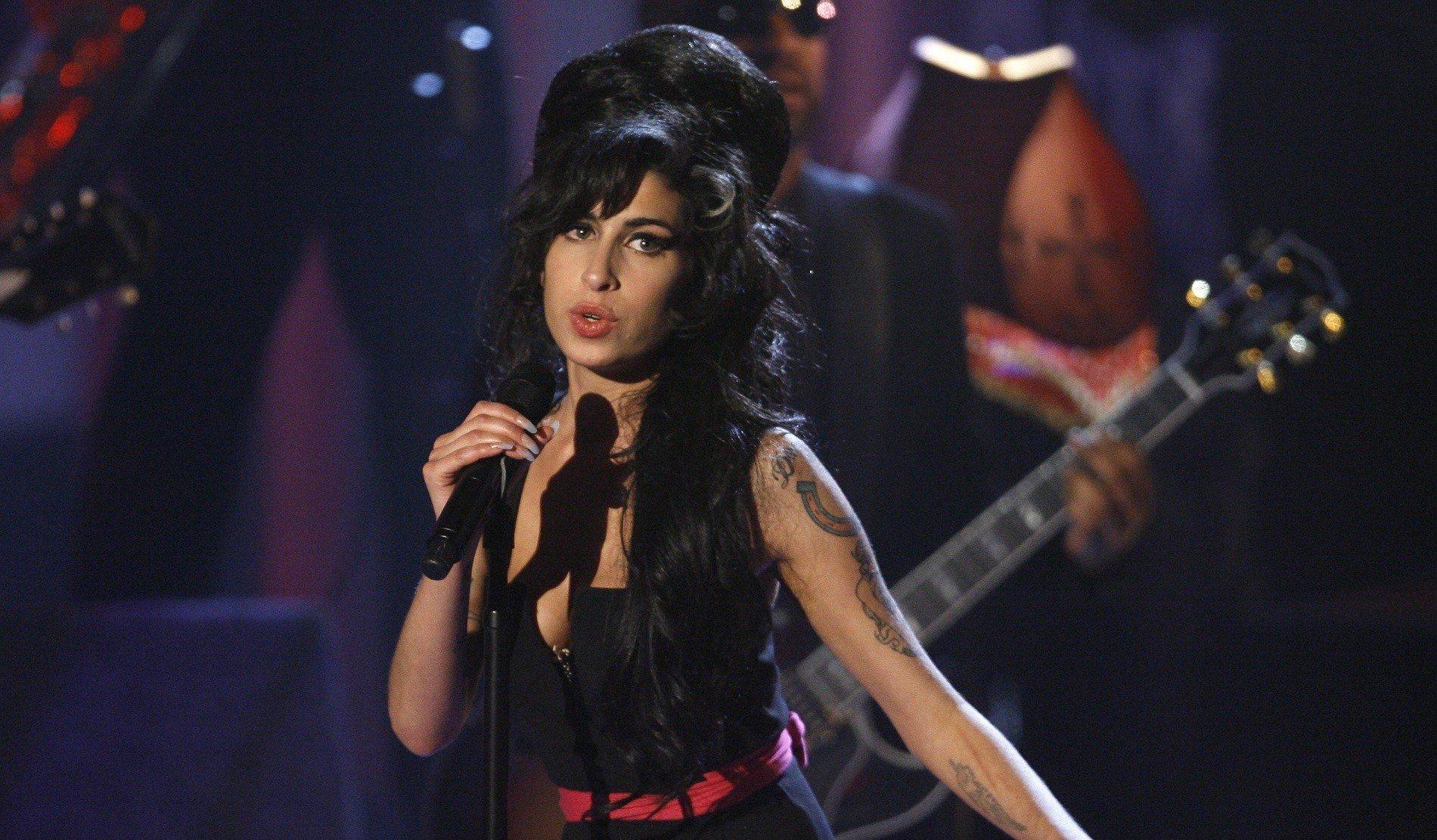
Photo: Chris Polk/FilmMagic
list
How Amy Winehouse's 'Back To Black' Changed Pop Music Forever
Ahead of the new Amy Winehouse biopic 'Back To Black,' reflect on the impact of the album of the same name. Read on for six ways the GRAMMY-winning LP charmed listeners and changed the sound of popular music.
When Amy Winehouse released Back To Black in October 2006, it was a sonic revelation. The beehive-wearing singer’s second full-length blended modern themes with the Shangri-Las sound, crafting something that seemed at once both effortlessly timeless and perfectly timed.
Kicking off with smash single "Rehab" before blasting into swinging bangers like "Me & Mr. Jones," "Love Is A Losing Game," and "You Know I’m No Good," Black To Black has sold over 16 million copies worldwide to date and is the 12th best-selling record of all time in the United Kingdom. It was nominated for six GRAMMY Awards and won five: Record Of The Year, Song Of The Year, Best New Artist, Best Female Pop Vocal Performance, and Best Pop Vocal Album.
Winehouse accepted her golden gramophones via remote link from London due to visa problems. At the time, Winehouse set the record for the most GRAMMYs won by a female British artist in a single year, though that record has since been broken by Adele, who won six in 2011.
Written in the wake of a break-up with on-again, off-again flame Blake Fielder-Civil, Black To Black explores heartbreak, grief, and infidelity, as well as substance abuse, isolation, and various traumas. Following her death in 2011, Back To Black became Winehouse’s most enduring legacy. It remains a revealingly soulful message in a bottle, floating forever on the waves.
With the May 17 release of Sam Taylor-Johnson’s new (and questionably crafted) Winehouse biopic, also titled Back To Black, it's the perfect time to reflect on the album that not only charmed listeners but changed the state of a lot of popular music over the course of just 11 songs. Here are five ways that Back To Black influenced music today.
She Heralded The Arrival Of The Alt Pop Star
When Amy Winehouse hit the stage, people remarked on her big voice. She had classic, old-time torch singer pipes, like Sarah Vaughn or Etta Jones, capable of belting out odes to lost love, unrequited dreams, and crushing breakups. And while those types of singers had been around before Winehouse, they didn’t always get the chance — or grace required — to make their kind of music, with labels and producers often seeking work that was more poppy, hook-packed, or modern.
The success of Back To Black changed that, with artists like Duffy, Adele, and even Lady Gaga drawing more eyes in the wake of Winehouse’s overwhelming success. Both Duffy and Adele released their debut projects in 2007, the year after Back To Black, bringing their big, British sound to the masses. Amy Winehouse's look and sound showed other aspiring singers that they could be different and transgressive without losing appeal.
Before she signed to Interscope in 2007, "nobody knew who I was and I had no fans, no record label," Gaga told Rolling Stone in 2011. "Everybody, when they met me, said I wasn’t pretty enough or that my voice was too low or strange. They had nowhere to put me. And then I saw [Amy Winehouse] in Rolling Stone and I saw her live. I just remember thinking ‘well, they found somewhere to put Amy…’"
If an artist like Winehouse — who was making records and rocking styles that seemed far outside the norm — could break through, then who’s to say someone else as bold or brassy wouldn’t do just as well?
It Encouraged Other Torch Singers In The New Millenium
Back To Black might have sounded fun, with swinging cuts about saying "no" to rehab and being bad news that could seem lighthearted to the casual listener. Dig a little deeper, though, and it’s clear Winehouse is going through some real romantic tumult.
Before Back To Black was released, Fielder-Civil had left Winehouse to get back together with an old girlfriend, and singer felt that she needed to create something good out of all those bad feelings. Songs like "Love Is A Losing Game" and "Tears Dry On Their Own" speak to her fragile emotional state during the making of the record, and to how much she missed Fielder-Civil. The two would later marry, though the couple divorced in 2009.
Today, young pop singers like Olivia Rodrigo, Taylor Swift, and Selena Gomez are lauded for their songs about breakups, boyfriends, and the emotional damage inflicted by callous lovers. While Winehouse certainly wasn’t the first to sing about a broken heart, she was undoubtedly one of the best.
It Created A Bit Of Ronsonmania
Though Mark Ronson was already a fairly successful artist and producer in his own right before he teamed with Winehouse to write and co-produce much of Back To Black, his cred was positively stratospheric after the album's release. Though portions of Back To Black were actually produced by Salaam Remi (who’d previously worked with Winehouse on Frank and who was reportedly working on a follow-up album with her at the time of her death), Ronson got the lion’s share of credit for the record’s sound — perhaps thanks to his his GRAMMY win for Best Pop Vocal Album. Winehouse would even go on to guest on his own Version record, which featured the singer's ever-popular cover of "Valerie."
In the years that followed, Ronson went on to not only produce and make his own funky, genre-bending records, but also to work with acts like Adele, ASAP Rocky, and Paul McCartney, all of whom seemingly wanted a little of the retro soul Ronson could bring. He got huge acclaim for the funk-pop boogie cut "Uptown Funk," which he wrote and released under his own name with help from Bruno Mars, and has pushed into film as well, writing and producing over-the-top tracks like A Star Is Born’s "Shallow" and Barbie’s "I’m Just Ken." To date, he’s been nominated for 17 GRAMMY Awards, winning eight.
Ronson has always acknowledged Winehouse’s role in his success, as well, telling "BBC Breakfast" in 2010, "I've always been really candid about saying that Amy is the reason I am on the map. If it wasn't for the success of Back To Black, no one would have cared too much about Version."
Amy Showcased The Artist As An Individual
When the GRAMMY Museum hosted its "Beyond Black - The Style of Amy Winehouse" exhibit in 2020, Museum Curator and Director of Exhibitions Nicholas Vega called the singer's sartorial influence "undeniable." Whether it was her beehive, her bold eyeliner, or her fitted dresses, artists and fans had adopted elements of Winehouse’s Back To Black style into their own fashion repertoire. And though it’s the look we associate most with Winehouse, it was actually one she had truly developed while making the record, amping up her Frank-era low-slung jeans, tank tops, and polo shirts with darker eyeliner and much bigger hair, as well as flirty dresses, vibrant bras, and heels.
"Her stylist and friends were influential in helping her develop her look, but ultimately Amy took bits and pieces of trends and styles that she admired to create her own look," Vega told GRAMMY.com in 2020. While rock ‘n’ rollers have always leaned into genre-bending styles, Winehouse’s grit is notable in the pop world, where artists typically have a bit more of a sheen. These days, artists like Miley Cyrus, Billie Eillish, and Demi Lovato are willing to let their fans see a bit more of the grit — thanks, no doubt, to the doors Winehouse opened.
Winehouse also opened the door to the beauty salon and the tattoo studio, pushing boundaries with not just her 14 different vintage-inspired tattoos — which have become almost de rigeur these days in entertainment — but also with her signature beehive-like bouffant, which hadn’t really been seen on a popular artist since the ‘60s.It’s a frequent look for contemporary pop divas, popping up on artists like Ariana Grande, Lana Del Rey, and Dua Lipa.
The Dap-Kings Got The Flowers They Deserved
Six of Back To Black’s 11 songs, including "Rehab," got their "retro" sound via backing from the Dap-Kings, a Brooklyn-based soul act Ronson recruited for the project.
While Winehouse’s lyrics were mostly laid down in London, the Dap-Kings did their parts in New York. Ronson told GRAMMY.com in 2023 that the Dap-Kings "brought ['Rehab'] to life," saying, "I felt like I was floating because I couldn’t believe anybody could still make that drum sound in 2006." Winehouse and the Dap-Kings met months later after the record was released, and recorded "Valerie." The band later backed Winehouse on her U.S. tour.
Though the Dap-Kings were known in hip musical circles for their work with late-to-success soul sensation Sharon Jones, Back To Black’s immense success buoyed the listening public’s interest in soul music and the Dap-Kings' own profile (not to mention that of their label, Daptone Records).
"Soul music never went away and soul lovers never went away, but they’re just kind of closeted because they didn’t think it was commercially viable," Dap-Kings guitarist Binky Griptite said in the book It Ain't Retro: Daptone Records & The 21st Century Soul Revolution. "Then, when Amy’s record hit, all the undercover soul fans are like, I’m free. And then that’s when everybody’s like, Oh, there’s money in it now."
The success of Back To Black also seems to have firmly cemented the Dap-Kings in Ronson’s Rolodex, with the group’s drummer Homer Steinweiss, multi-instrumentalist Leon Michaels, trumpeter Dave Guy, and guitarist/producer Tom Brenneck appearing on many of his projects; the Dap-Kings' horns got prominent placement in "Uptown Funk."
Amy Exposed The Darker Side Of Overwhelming Success
Four years after Winehouse died, a documentary about her life was released. Asif Kapadia’s Amy became an instant rock-doc classic, detailing not only Winehouse’s upbringing, but also her struggles with fame and addiction. It won 30 awards after release, including Best Documentary Feature at the 88th Academy Awards and Best Music Film at the 58th GRAMMY Awards.
It also made a lot of people angry — not for how it portrayed Winehouse, but for how she was made to feel, whether by the British press or by people she considered close. The film documented Winehouse’s struggles with bulimia, self-harm, and depression, and left fans and artists alike feeling heartbroken all over again about the singer’s passing.
The documentary also let fans in on what life was really like for Winehouse, and potentially for other artists in the public eye. British rapper Stormzy summed it up well in 2016 when he told i-D, "I saw the [documentary, Amy] – it got me flipping angry... [Amy’s story] struck a chord with me in the sense that, as a creative, it looks like on the outside, that it’s very ‘go studio, make a hit, go and perform it around the world, champagne in the club, loads of girls’. But the graft and the emotional strain of being a musician is very hard. No one ever sees that part."
These days, perhaps because of Winehouse’s plight or documentaries like Amy, the music-loving population seems far more inclined to give their favorite singers a little grace, whether it’s advocating for the end of Britney Spears’ conservatorship or sympathizing with Demi Lovato’s personal struggles. Even the biggest pop stars are still people, and Amy really drove that point home.
We Only Said Goodbye With Words: Remembering Amy Winehouse 10 Years Later

Photo: Jathan Campbell
list
How Much Is A GRAMMY Worth? 7 Facts To Know About The GRAMMY Award Trophy
Here are seven facts to know about the actual cost and worth of a GRAMMY trophy, presented once a year by the Recording Academy at the GRAMMY Awards.
Since 1959, the GRAMMY Award has been music’s most coveted honor. Each year at the annual GRAMMY Awards, GRAMMY-winning and -nominated artists are recognized for their musical excellence by their peers. Their lives are forever changed — so are their career trajectories. And when you have questions about the GRAMMYs, we have answers.
Here are seven facts to know about the value of the GRAMMY trophy.
How Much Does A GRAMMY Trophy Cost To Make?
The cost to produce a GRAMMY Award trophy, including labor and materials, is nearly $800. Bob Graves, who cast the original GRAMMY mold inside his garage in 1958, passed on his legacy to John Billings, his neighbor, in 1983. Billings, also known as "The GRAMMY Man," designed the current model in use, which debuted in 1991.
How Long Does It Take To Make A GRAMMY Trophy?
Billings and his crew work on making GRAMMY trophies throughout the year. Each GRAMMY is handmade, and each GRAMMY Award trophy takes 15 hours to produce.
Where Are The GRAMMY Trophies Made?
While Los Angeles is the headquarters of the Recording Academy and the GRAMMYs, and regularly the home of the annual GRAMMY Awards, GRAMMY trophies are produced at Billings Artworks in Ridgway, Colorado, about 800 miles away from L.A.
Is The GRAMMY Award Made Of Real Gold?
GRAMMY Awards are made of a trademarked alloy called "Grammium" — a secret zinc alloy — and are plated with 24-karat gold.
How Many GRAMMY Trophies Are Made Per Year?
Approximately 600-800 GRAMMY Award trophies are produced per year. This includes both GRAMMY Awards and Latin GRAMMY Awards for the two Academies; the number of GRAMMYs manufactured each year always depends on the number of winners and Categories we award across both award shows.
Fun fact: The two GRAMMY trophies have different-colored bases. The GRAMMY Award has a black base, while the Latin GRAMMY Award has a burgundy base.
Photos: Gabriel Bouys/AFP via Getty Images; Frederick M. Brown/Getty Images
How Much Does A GRAMMY Weigh?
The GRAMMY trophy weighs approximately 5 pounds. The trophy's height is 9-and-a-half inches. The trophy's width is nearly 6 inches by 6 inches.
What Is The True Value Of A GRAMMY?
Winning a GRAMMY, and even just being nominated for a GRAMMY, has an immeasurable positive impact on the nominated and winning artists. It opens up new career avenues, builds global awareness of artists, and ultimately solidifies a creator’s place in history. Since the GRAMMY Award is the only peer-voted award in music, this means artists are recognized, awarded and celebrated by those in their fields and industries, ultimately making the value of a GRAMMY truly priceless and immeasurable.
In an interview featured in the 2024 GRAMMYs program book, two-time GRAMMY winner Lauren Daigle spoke of the value and impact of a GRAMMY Award. "Time has passed since I got my [first] GRAMMYs, but the rooms that I am now able to sit in, with some of the most incredible writers, producers and performers on the planet, is truly the greatest gift of all."
"Once you have that credential, it's a different certification. It definitely holds weight," two-time GRAMMY winner Tariq "Black Thought" Trotter of the Roots added. "It's a huge stamp as far as branding, businesswise, achievement-wise and in every regard. What the GRAMMY means to people, fans and artists is ever-evolving."
As Billboard explains, artists will often see significant boosts in album sales and streaming numbers after winning a GRAMMY or performing on the GRAMMY stage. This is known as the "GRAMMY Effect," an industry phenomenon in which a GRAMMY accolade directly influences the music biz and the wider popular culture.
For new artists in particular, the "GRAMMY Effect" has immensely helped rising creators reach new professional heights. Samara Joy, who won the GRAMMY for Best New Artist at the 2023 GRAMMYs, saw a 989% boost in sales and a 670% increase in on-demand streams for her album Linger Awhile, which won the GRAMMY for Best Jazz Vocal Album that same night. H.E.R., a former Best New Artist nominee, saw a massive 6,771% increase in song sales for her hit “I Can’t Breathe” on the day it won the GRAMMY for Song Of The Year at the 2021 GRAMMYs, compared to the day before, Rolling Stone reports.
Throughout the decades, past Best New Artist winners have continued to dominate the music industry and charts since taking home the GRAMMY gold — and continue to do so to this day. Recently, Best New Artist winners dominated the music industry and charts in 2023: Billie Eilish (2020 winner) sold 2 million equivalent album units, Olivia Rodrigo (2022 winner) sold 2.1 million equivalent album units, and Adele (2009 winner) sold 1.3 million equivalent album units. Elsewhere, past Best New Artist winners have gone on to star in major Hollywood blockbusters (Dua Lipa); headline arena tours and sign major brand deals (Megan Thee Stallion); become LGBTIA+ icons (Sam Smith); and reach multiplatinum status (John Legend).
Most recently, several winners, nominees and performers at the 2024 GRAMMYs saw significant bumps in U.S. streams and sales: Tracy Chapman's classic, GRAMMY-winning single "Fast Car," which she performed alongside Luke Combs, returned to the Billboard Hot 100 chart for the first time since 1988, when the song was originally released, according to Billboard. Fellow icon Joni Mitchell saw her ‘60s classic “Both Sides, Now,” hit the top 10 on the Digital Song Sales chart, Billboard reports.
In addition to financial gains, artists also experience significant professional wins as a result of their GRAMMY accolades. For instance, after she won the GRAMMY for Best Reggae Album for Rapture at the 2020 GRAMMYs, Koffee signed a U.S. record deal; after his first GRAMMYs in 2014, Kendrick Lamar saw a 349% increase in his Instagram following, Billboard reports.
Visit our interactive GRAMMY Awards Journey page to learn more about the GRAMMY Awards and the voting process behind the annual ceremony.
